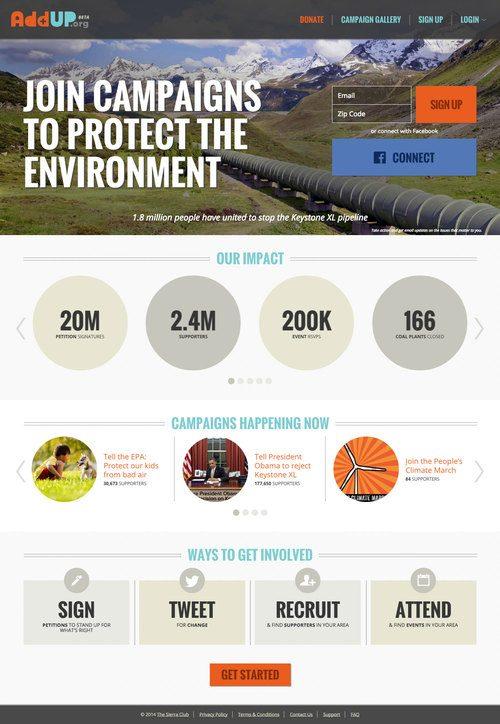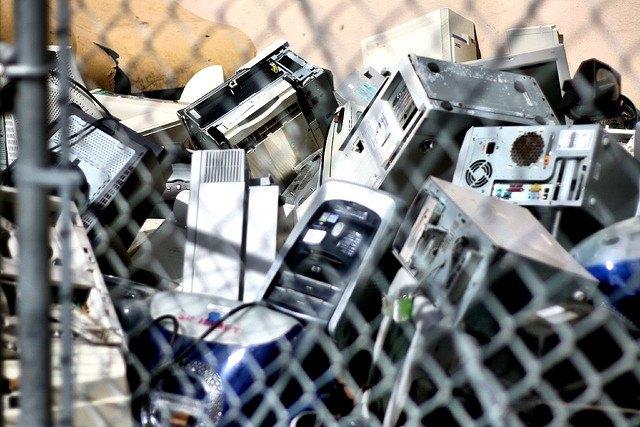Putting the Brakes on Fast Fashion


Just as fast food chains have fueled Americans’ hunger for more, bigger, faster when it comes to what we put in our bodies, fast fashion brands increasingly beguile shoppers the world over with options of what to put on our bodies. Over the past decade, rapidly made garments – sold at low prices and manufactured at even lower price points – have proliferated shopping centers across the nation. In some fast fashion shops, consumers can even buy an outfit for the price of a Happy Meal.
Consumers’ fascination with stores such as Forever 21, H&M, Uniqlo and Zara isn’t rocket science – who wouldn’t want to buy the latest trends for a fraction of the cost? Why pay $100 for a sweater, when you can get a near-replica for only $25? That’s how most shoppers understand fast fashion.
And that’s why earlier this year, fast fashion forefather Forever 21 opened the concept test store F21 Red, which boasts starting price points as low as $1.80 (selling $3.80 T-shirts, $5.80 leggings, and $7.80 denim jeans). Consumers are eating it up. Fast fashion is a multi-billion dollar industry, and it’s growing. Already, Forever 21 operates 600 stores worldwide – and the company plans to double its global presence by 2017 – while Zara has 1,800 locations and H&M owns 3,400 stores. Annual revenue for those companies has risen by the billions in the past years, a significant contrast to the slow decline of the traditional apparel retail market.
Rather than follow the traditional apparel model of selling seasonal lines of clothing, manufactured and marketed months in advance, these bargain brands rapidly respond to the latest fashion trends, quickly address consumer demands, and live by just-in-time production. As a result, consumers get more, faster: A fast fashion shopper can get a dress, two scarves, a shirt and pants for the price of only one sweater from a traditional retailer.
While this model may be good for consumers’ pocket books and closets, incidents such as the collapse of Rana Plaza and the unnaturally dyed polluted rivers of China have shown that making clothes using low-cost labor in environmentally unregulated developing countries can come at great costs. What is the antidote to this apparel paradox?
In response to public scrutiny and pressure from activist groups – take Greenpeace’s Toxic Threads campaign or Clean Clothes Campaign's ongoing petitions – some fast fashion brands are increasingly addressing social and environmental supply chain concerns. For example, after public pressure ignited by Greenpeace’s Detox campaign, Zara committed to eliminating all hazardous chemicals from its supply chain and clothes by 2020. And after the Rana Plaza collapse, Zara, H&M and other fast fashion brands signed the Accord on Bangladesh Fire and Building Safety in hopes of avoiding future disasters.
In some cases, brands are moving beyond simply responding to crises to proactively developing sustainability strategies. H&M, for example, launched a Conscious Collection made from recycled fibers and organic cotton, and through its Don’t Let Fashion Go to Waste campaign the company invites shoppers to bring in their used clothing into stores for recycling. The Swedish retailer has also pledged to pay living wages to textile workers in factories in Bangladesh and Cambodia that make its clothes, and has made its supplier list public to increase supply chain transparency. All steps in the right direction – but is it enough?
Advocates of slow fashion think not. A parallel to the slow food movement, slow fashion promotes the making of high quality garments – often handcrafted clothes that are meant to last for more than one season – using locally grown materials and resources. An alternative to the mass-produced, disposable fashions of low-cost retailers, slow fashion startups such as Zady, Everlane and Cuyana espouse "fewer, better" instead of more and faster.
Will shops like Forever 21, H&M or Zara ever be able to fully slow down, all while meeting consumers’ voracious appetite? Perhaps the question should be: should they slow down? If fast fashions brands promise to make their clothes more responsibly, is that enough? Can we live in a world where a more sustainable version of fast fashion and slow fashion can happily coexist? We’d love to hear your thoughts, please share them below.
Which City Ranks as Most Connected?


We know that cities are growing bigger, smarter and more connected, but which cities are best connected and which ones are growing their capabilities most quickly? A recent survey by communication technology provider Ericsson evaluates 40 leading cities around the world for their level of information and communication technology (ICT) maturity.
What the study found was that cities that were ranked lower are growing more quickly, thus beginning to catch up with those at the head of the pack.
The cities found to have the highest level of ICT maturity were Stockholm, London, Paris, Singapore and Copenhagen. Only three U.S. cities made the list, with New York coming in seventh, Los Angeles 11th and Miami 15th.
The report claims that ICT will form future cities, the way the railroad formed London and the highway formed Los Angeles. That may well be, though it seems that ICT is far less place-dependent than those other defining innovations were. Perhaps it is more a matter of how future cities will utilize their technology that will define them and distinguish them from others.
Because, as the report states, “it is not enough to simply invest in new ICT infrastructure. For this infrastructure to be fully utilized, it must be applied in new ways and turned into a vital resource for innovation involving people, businesses and city governments. Without compelling and useful applications, there will be no benefits for the individuals and the city as a whole.”
This provides a challenge and an opportunity to city leaders. “To get the full benefits of ICT infrastructure, city leadership needs to master its use of ICT to boost the city’s economy and competitiveness; provide services; and develop urban environment, quality of life and community collaboration.”
The report finds a strong correlation between the level of ICT maturity and Triple Bottom Line (TBL) which consists of eight indicators that measure social, economic and environmental status: health, education, social inclusion, productivity, competitiveness, resources, pollution, and climate change. These are matched along with the 7 ICT variables that measure infrastructure, affordability and usage status: broadband quality, availability, tariffs, IP transit prices, technology use, individual use, public and market use.
The linkage between the two plays out on multiple dimensions. A high level of ICT maturity provides the means to not only achieve improved efficiencies and resource productivity, but it provides for increased transparency as well. It also provides mechanisms to allow citizens to become more aware of and involved in their communities and for collaboration to be formed across various groups of stakeholders.
These relationships have led the authors to make three predictions.
- People power, rather than institutions will drive urban development
- GDP will be redefined to capture a new scope of growth
- Collaboration will restructure organizations
The common denominator of these three is increased participation in the community that implicitly leads to a more thriving and flourishing state of existence.
Indeed, these are the terms used by the authors of the new book Flourishing Enterprise, when they say that, “Flourishing is not anchored in mundane notions of continuity. It’s not about passing along what is now available….It’s about thriving, doing well, prospering, growing or developing in a vigorous way, especially as the result of a particularly congenial environment.”
This echoes the report authors’ predictions, when they talk about, “people self-organizing to establish cooperative initiatives that tackle social problems, improve living conditions, increase collaboration, or – in countless other ways – make their cities better places to live.”
Image courtesy of Ericsson.
RP Siegel, PE, is an author, inventor and consultant. He has written for numerous publications ranging from Huffington Post to Mechanical Engineering. He and Roger Saillant co-wrote the successful eco-thriller Vapor Trails. RP, who is a regular contributor to Triple Pundit and Justmeans, sees it as his mission to help articulate and clarify the problems and challenges confronting our planet at this time, as well as the steadily emerging list of proposed solutions. His uniquely combined engineering and humanities background help to bring both global perspective and analytical detail to bear on the questions at hand.
Follow RP Siegel on Twitter.
Seeking Creative Ways to Deal with Food Waste at Hospitals


Hospitals and health clinics across the world struggle with waste for numerous reasons. Their waste streams are more complicated, due to the various streams they produce and the regulations they have to follow: think of all the bandages, pharmaceuticals and yes, what comes out of the operating rooms as well. Information on how much waste hospitals generate is sparse. One survey suggests hospitals in the U.S. generate about 34 pounds of waste per day, per bed—but that was from a network of “eco-friendly” hospitals. Food waste is part of the problem hospitals face: a conservative estimate suggests hospitals waste three to four pounds of food daily per bed, not surprising considering the convergence of sick people and, well, bad hospital food. The statistics are dismal on the other side of the pond, too: The Guardian estimates one-fourth of all food served up in British hospitals ends up in the trash.
With food waste contributing about 10 percent to a hospital’s waste stream, more health care companies are finding more creative ways to churn all that slop into something useful. One hospital in Minnesota churns uneaten food into fertilizer. Naturally, composting is another option, and can be even more seamless if the hospital goes with compostable tableware—a tough sell when procurement officers only want to look at the financial figures. With the pressure on to reduce the amount of garbage sent to municipal landfills, one company based in New York is finding a niche with its solution for waste diversion.
BioHitech America, based in New York, has been growing their business with their aerobic digesters. What appear as boxy stainless steel bins uses natural bacteria to process about 2,500 pounds of food waste a day—exceptions including raw bread dough, shells from mussels and clams as well as cornhusks. Just about everything else can be converted into grey water (“nutrient-neutral,” as the company states) and then can be carried away using existing sewer lines. It is not a total “zero waste” solution, but it does eliminate food waste from entering landfills, where it then creates methane, one of the most potent greenhouse gases. Biohitech America also provides clients with a cloud computing system that tracks the performance of a business’s waste reduction plan.
The company recently added two more in the Boston area. One hospital in New Jersey claims it has diverted 11 tons of food waste a month from landfills, allowing the facility to slash its waste disposal budget by half. BioHitech America has set its sights abroad as well, as it recently lined up a distributor in the United Kingdom and has sold its “Eco-Safe Digester” in Israel, too.
Clearly more can be done to eliminate food waste from hospitals—smarter food choices and better selections for patients are a start. But investment in technologies such as that of BioHitech America is one way in which health care facilities can operate not only more sustainably, but economically as well.
Leon Kaye is based in California and most recently worked for a renewable energy investment company in the Middle East. Follow him on Instagram and Twitter. Other thoughts of his are on his site, greengopost.com.
Image credit: BioHitech America
Consumer Behavior Drives Black Friday and Cyber Monday


The sales results of Black Friday and Cyber Monday confirm new consumer behavior -- meaning business must change to grow sales. This new sales reality is based upon Americans consuming better. The question is, will consuming better will be enough to restore our economy, human health and the environment?
Holiday shopping season results
This holiday sales season is being driven by consumers prudently managing their purchases around a target budget. In response retailers are pushing ever larger price discounts to win their share of the consumer’s procurement budget. A marketshare price war is now a business norm. The consequences are continued weak economic growth plus an ongoing business focus upon cost reduction to maintain profit margins that does not bode well for 2015 wage increases.
The other business reality from today's holiday season is that price discounting alone no longer guarantees sales success. Consumers are exercising higher expectations on how a product aligns with their values on quality, service, health, wellness and environmental/social responsibility. Consumers want it all. They want heavy price discounts on products that align with their values. This holiday shopping season is confirming that sales success now depends upon offering consumers “cost less, mean more” products and services.
Consuming better and sustainability
This holiday shopping season again confirms that consumers have not adopted sustainability as a core best practice. The American consumer has accepted that they must consume better. They are shopping with more financial prudence. They are consuming better by focusing upon whether a product aligns with their values. What the vast majority of consumers have not embraced is sustainable consumption with a focus upon reduce, reuse and repurpose.
Consuming better is a step toward sustainability
Behavioral economics suggests that sustainable consumption by consumers will require their adoption of a new cultural norm. Consuming better is an important step toward achieving this norm. The reality is that consumer shopping will never go away because it enables a positive social experience, it creates a sense of success and is a form of entertainment. Shopping is fun.
What has changed is that consumers are more aware of the cost that shopping for fun has upon their finances, health and the environment. Consumers are demanding heavy price discounting so they can continue to enjoy shopping within their budget constraints. The increased consumer awareness of the social and environmental impacts of shopping is influencing what they buy and who they buy from. As a result they are shopping better by buying products that are more sustainably produced and/or disposed of at the end of use. They are buying products that have strong links to their wellness and that of their loved ones. In a remarkably short period of time the American consumer has adopted consuming better as a cultural norm.
The consumer sustainability question
The consumer sustainability issue is whether shopping will transition from consuming better to consuming sustainably? This behavioral economics question is driven by how much pain is required to reshape human behavior. Economic history suggests it will require a lot of pain over an extended period of time. For example, organizations like the AAA advocated for automobile seat belts in the early 1900s. The behavioral economics of seat belt adoption was that America had to experience 50,000 ANNUAL lives lost to vehicle accidents before consumer/voter pressures resulted in thirty-four states adopting seat belt mandates in 1989. Today automobile safety is a key marketing feature promoted to consumers.
There is growing evidence that sustainable consumption will follow a similar behavioral economics path where a small group of advocates and consumers eventually influence a mass-market cultural change. For example, McDonald’s and Coca Cola are facing revenue erosion as consumers shift their consumption to healthy food sustainably sourced. Even with this shift in consumer awareness/consumption, the customers of McDonald's and Coca Cola still annually buy billions of dollars of unsustainably sourced food with identified human health impacts. Rooftop solar sales in California are another example. Sales are soaring as homeowners gain confidence that rooftop solar systems can permanently lower electric bills and emissions. Yet non-renewable electricity is still the majority source of electricity used in America’s greenest state.
So even with the evidence of substantial progress, will consumer's behavior change come too late to stall irreversible climate change and species extinction?
Bill Roth is an economist and the Founder of Earth 2017. He coaches business owners and leaders on proven best practices in pricing, marketing and operations that make money and create a positive difference. His book, The Secret Green Sauce, profiles business case studies of pioneering best practices that are proven to win customers and grow product revenues. Follow him on Twitter: @earth2017
Breaking Down Bioplastics


Editor’s Note: This post is part of an ongoing student blogging series entitled The Business Of Sports & Sustainability. This “micro-blog” is the product of the nations first MBA/MPA certificate program dedicated to sustainability in the sports industry. You can follow the series here.
By Jocelynn Stone
It’s the second inning and the Giants have just taken the lead in the NLDS series, the scoreboard has a message encouraging fans to help with recycling and composting in the stadium. Happy that my team is winning, I pick up an empty cup to lend a hand. Confusion sets in. The side of the cup boasts that it is made from plants and on the bottom is the iconic chasing arrow symbol with a number 7 in the middle. Unfortunately, it doesn’t say it is compostable. Should the cup go in the compost bin or the recycling bin?
There are an ever-increasing variety of plastics products derived from renewable raw materials entering the market. The market for biobased and compostable plastics, known as bioplastics, is expected to be worth over $5 billion by 2018 according to Dr. Molly Morse of Mango Materials, a startup that is making biodegradable plastic with methane eating bacteria.
Bioplastics hold great promise. The potential benefits include reducing dependence on fossil fuels and increased diversion of waste from landfills. Readily noticeable is their use in food service items. They are the darlings of sports venues, such as Seattle’s Safeco Field, Yankee Stadium and Penn State’s Beaver Stadium that are working on zero waste initiatives.
Unfortunately, bioplastics may present problems when it comes time to dispose of them.
Not all biobased plastics will biodegrade and not all biodegradable plastics will compost. Many biobased products are designed to behave like traditional petroleum-based plastics and remain structurally intact for hundreds of years. Polyethylene Terephthalate/PET and Polyethylene/PE plastics are being offered in biobased versions. These materials are chemically identical to their petroleum-based cousins and interchangeable in the recycle stream. One example is Braskem’s fully biobased polyethylene.
There is debate about the danger of bioplastics products contaminating the petroleum-based plastics’ recycle stream. It appears that only plastics, biobased or petroleum-based, with identical molecular structures can be recycled together. Likewise, if non-compostable bioplastics make it into the compost stream they cause contamination there.
Compostable plastics, as defined by American Society for Testing & Materials, ASTM D6400, must meet three criteria. They must biodegrade, disintegrate and have no eco-toxicity within 180 days. They require specific conditions in which to decompose and their rate of biodegradation is slower than food and green waste. This requires their being processed at commercial compost facilities.
During a recent visit to the Jepson Prairie Organics composting facility near Vacaville, California we discussed some of the issues posed for their operation by the compostable plastics they receive. They have to separate them from the other compostable waste because their primary compost product is certified organic. Since the majority of bioplastics on the market today are made with GMO feedstock, they don’t fit the criteria for organic certification. Furthermore, because they take twice as long as average to decompose, they have to be processed separately, essentially causing a loss for the facility.
There are three compostable biobased plastic resins that dominate the market.
Polylactic Acid or PLA plastic resin is made by fermenting dextrose from various sources, such as corn, to form lactic acid. This acid is then treated to create lactide and then the final process creates the polymer from which the plastic is made. Natureworks, LLC, a subsidiary of Cargill, uses cornstarch in this process to create their PLA under the brand name Ingeo.
Polyhydroxy Fatty Acids or PHA plastic resin is made from the anaerobic digestion of starch. Basically, a proprietary strain of microbes digest starch and create plastic polymer within their cells, this polymer is then harvested through the destruction of the bacteria. Metabolix makes a bioplastic product called Mirel using this process.
Thermoplastic Starch resin is derived from blending plant based materials, such as starch, vegetable oils and cellulose that have been processed with heat to weaken their polymer structure, with other biobased and/or petroleum-based plastic polymers. An example of Thermoplastic is the product Mater-Bi produced by Novamont.
It turns out my ballpark cup is made of Ingeo PLA resin. It has the chasing arrow symbol #7 because this is the designation for all “other” plastics. Although this plastic is designed to meet the ASTM 6400 standards and biodegrade within 180 days, it is also highly recyclable. Yes, it is both commercially compostable and recyclable. The resin can be remanufactured using less energy than was used to make the original polymer. Ideally, PLA would be separated from the waste stream and recycled for new product instead of being composted.
It would appear that there needs to be clearer marking conventions to aide in proper disposal of these products for recycling or composting. More important, however, is the caveat, that in selecting a bioplastic product for a major application, such as a sports venue, the availability of local composting or recycling facilities for that type of product should be determined before making a material-use selection. As more and more applications for bioplastics products are developed, the feasibility of properly disposing of them should improve.
Photo: Creative Commons, Flicker
Jocelynn Stone designs and manages projects with sustainability in mind. She has a MBA in Sustainable Management from Presidio Graduate School, a BA in Architecture from UC Berkeley and is a Certified Sustainable Building Advisor.
Sierra Club Launching Activist Acceleration Tool in 2015


Next year the Sierra Club will launch a brand-new platform called AddUp.org that uses familiar social media tools to accelerate impact and drive real-world change. Its tagline, “Every Action Matters,” underscores the Sierra Club’s intent to leverage the collective power of their two million supporters to take direct action on initiatives that help protect the environment. Chris Thomas, the Sierra Club’s CIO (Chief Innovation Officer), was on hand at the Social Innovation Summit in Silicon Valley (November 19-20) to talk about the new site, and I had a chance to sit down with him for a few minutes to dig deeper.
Rethinking advocacy
Thomas is on a mission to shift the Sierra Club away from the old advocacy model of “send us your membership dues and we will do good things on your behalf.” Instead, he would like to give individual members and local chapters direct control over their activism. Thomas has partnered with Salesforce and New York-based Blue State Digital to get the job done.
“Wait, what?” I hear you asking. That’s right. The Sierra Club is using an enterprise-level customer relationship management (CRM) platform in service of creating an online grassroots movement at scale. To put this in context, Thomas took me back to the beginnings of technology use at the 122-year-old Sierra Club. The first green advocacy group to use email to reach its members, the Sierra Club had been using homegrown CRM systems since the mid 1980s, but IT had not been part of overall strategic planning before now. In a sense, you can think of the Sierra Club as a 122-year-old startup. “We want to rethink what it means to be a member of an advocacy group," Thomas told me. "Technology is where the nexus is."
Creating urgency, activating the base
AddUp.org is live right now, in beta, so I registered to have a look around. The site is clean and simple, with short, punchy calls to action: Sign. Tweet. Recruit. Attend. Get Started. Once I log in, my personalized dashboard shows me what actions I have taken and what actions I have yet to take. Those “holes” in my action profile are compelling reminders of how easy it would be to take just one more small action.
The platform gives people the ability to contextualize their actions. “People click on petitions, but then don’t know what happens after that. Now we are starting to collect data so we can show people how their actions translate into impact in the real world,” said Thomas.
Environmental issues tend to play out over the long term, and a benefit of the platform is that it gives the Sierra Club a way to convey urgency to act now. “The main point of the platform is not necessarily to grow membership,” Thomas added, “it’s to activate the base.”
The future: Activism or slacktivism?
Does engagement with social media on environmental advocacy web sites inspire real-world collective action that makes a difference? Is social media a game-changing tool that inspires revolutionary action, or is it a feel-good but ineffective tool for armchair activists? Some research indicates that the truth may lie somewhere in between, but advocacy groups like the Sierra Club are betting that social media engagement is at the very least a door-opener to further action in the real world. A recent report, the “2014 Cone Communications Digital Activism Study” (covered in a December 1st article by Alexis Petru in TriplePundit), reinforces that notion.
What do you think? Do social media campaigns encourage “slacktivism” or do they accelerate impact and help to drive change at scale? Leave a comment below.
Image credits: Chris Thomas, The Sierra Club. Photos used with permission.
Julie Noblitt is Community Manager at Benetech, a nonprofit that develops and uses technology to create positive social change, and an MBA candidate at Presidio Graduate School in San Francisco.
Businesses Needn’t Back Away on #GivingTuesday


By Brigitta Witt, Global Head of Corporate Responsibility, Hyatt
The #GivingTuesday movement is a much-needed respite for the holiday shopper, a time to step back and think about how we can all reconnect with the true generosity of the holiday season. Now in its third year, it’s an event that has grown in name and number to rival the famous Black Friday and Cyber Monday preceding it.
This year, the business community has joined the movement in force, with many signing on as official corporate partners for #GivingTuesday. But, on a holiday that has quickly gained momentum and influence on a message of consuming less, how can big brands and companies authentically join in and support the spirit of giving alongside nonprofits and passionate individuals?
Make Global Change Through Local Impact. This year, #GivingTuesday has gone global, with 10 countries now participating.
But the spirit of making a local, personal impact remains at the center of the movement, with more than 19,000 partners taking part. Hyatt is a name known around the world, but our approach to #GivingTuesday zeroes in on making a local impact by embracing the knowledge and passion of our more than 95,000 colleagues to nominate nonprofit organizations in their own communities to receive Hyatt Community Grants. This year’s 31 grant recipients, like Hyatt, are organizations dedicated to making a difference on the pressing issues that are at the heart of helping their own communities thrive– from improving education systems to putting an end to domestic violence.
Use your businesses’ voice and reach to spread the word. #GivingTuesday has grown, in part, because of the impact and visibility brought to the movement by the heartwarming stories about making a difference. In selecting the nonprofits that will receive this year’s Hyatt Community Grants, we prioritize those organizations where there’s a deeper connection and an important story to share. More than just writing a check, we’re using the power of our brand’s social and digital channels to share the stories of how each organization is making a difference – like grant recipient All Faiths Food Bank, an organization that has worked hand-in-hand with Hyatt Regency Sarasota for 17 years to reach food deserts and low-income neighborhoods in Sarasota and DeSoto counties through mobile farmer’s markets and delivering fresh produce. Or, La Clairière, a nonprofit that partners with Park Hyatt Paris Vendôme to help people who suffer from social exclusion by supporting working re-entry programs and providing training in our hotels.
Grassroots giving doesn’t have to mean small impact. Just over 2,500 nonprofit organizations participated in the first #GivingTuesday, but the actions from tens of thousands of individuals who were inspired by the movement generated more than $10 million in donations. This year, some experts estimate that #GivingTuesday donations worldwide will collectively exceed $50 million. Focusing on small organizations that have big potential adds up over time, and we’ve seen the impact first hand: each of our grant recipients receive anywhere from$5,000 to $20,000, but collectively, our community-focused approach to giving has touched 123 communities in 38 countries.
While some may see it as counterintuitive for any for-profit business to get behind #GivingTuesday, we firmly believe that brands needn’t shy away from embracing the spirit of generosity. Collectively, bringing brands into the #GivingTuesday fold is helping further expand the movement’s impact by bringing new visibility and momentum. And, through authentic engagement that focuses on local, continuous support that builds to a greater impact, brands should feel inspired to jump on the #GivingTuesday bandwagon.
M&S makes headway on 2020 sustainability targets


Marks & Spencer is making significant progress in embedding its sustainable business plan – Plan A – across its operations, according to a half-year update just issued by the British high street stalwart.
Over 60% of M&S products, almost two billion items sold every year, now have a Plan A attribute – an eco or ethical quality above the market norm. Attributes make it easy for M&S customers to shop more sustainably and further embeds Plan A into every buying department, says the company. The figure puts M&S well ahead of its target to have 50% by 2015 and on track for all M&S products to have an attribute by 2020.
On the logistics side, the M&S food delivery team has added 14 trailers to its fleet that use Liquid Nitrogen to refrigerate the unit, rather than traditional diesel fuel. M&S says the viability of the trailers to replace the 670 diesel fuelled trailers that the M&S food delivery team runs will be assessed over a number of years.
In energy, the retailer has announced that it will be rolling out LED lighting to every M&S Food Hall over the next two years. LED is a key element of M&S’ strategy to meet the Plan A energy efficiency commitments to reduce energy usage by 35% by 2015 and 50% by 2020 relative to square footage increase (against a 2006/7 baseline). In stores where LED lighting was trialled, energy consumption was reduced by 20%.
In clothing, almost a third of the cotton sourced by M&S is now grown to BCI (Better Cotton Initiative) standards and The Marks & Spencer Clothes Exchange, known as Shwopping in the UK, has been launched in M&S’ 20 stores in the Czech Republic and 17 stores in Hong Kong.
Mike Barry, Director of Plan A at M&S, commented: “It’s been an exciting first six months for Plan A 2020. Launched in June, the new 100 commitment sustainable business plan is making an impact on M&S operations across the world and engaging our customers, employees and partners in more sustainable lifestyles and ways of doing business.
“It is helping us stand up and take action on the sustainable retail challenges of today and tomorrow. Our products are becoming more sustainable, we’re testing new technology that could transform our future operations and we’re supporting causes that make a real difference to the future for our customers and the local communities we operate in.
“We’re also ensuring we share best practice and learn from others. Only through collaboration will business create meaningful change and our work with the Consumer Goods Forum is a great example of big companies coming together to make shops and products better for both people and planet.”
Tax havens still shrouded in secrecy, says Christian Aid


Christian Aid campaigners wearing business suits and white masks outside the Foreign and Commonwealth Office in Westminster, London today have demanded faster progress towards tax haven transparency.
A year after Britain’s tax havens agreed to consider the lifting the secrecy around who really owns the hundreds of thousands of companies they host, they have made alarmingly little progress and many criminals will rest easier as a result, a new Christian Aid assessment has warned.
Ministers from the Overseas Territories – which include the British Virgin Islands, the Cayman Islands and Bermuda – are holding their annual conference in London this week.
Joseph Stead, Senior Economic Justice Adviser at Christian Aid, said: “Over the last year, so little has changed that it is hard to believe the Overseas Territories were genuine in their commitment to consider public registers of who owns companies. In April the Prime Minister reminded them that ‘the rest of the world is watching’ but they seem to be stalling in the hope that their promises will be forgotten.”
At last year’s meeting of the Joint Ministerial Council, which brings together political leaders from the Overseas Territories and UK Ministers, all the territories agreed to hold public consultations on creating public registers of who really owns companies.
Staples: Our Tech Recycling Stats are Still in the Dumps


The computer business has been bustling for a few years now. That makes sense in an economy that is increasingly becoming more tech-driven and mobile-dependent. Tablets, iPhones and newer mobile technology are taking the consumer's focus by storm. Stats posted by Statista indicate that the global shipments of tablets, desktop computers and laptops have been steadily increasing since 2010, with tablets taking the lead.
But what isn't doing so well, according to a study recently released by Staples, is the tech recycling market.
On the surface, it would seem that people just can't part with their favorite gadgets. For 13 percent of those surveyed, that seems to be true. Those first-ever phones, tablets and clunky computers seem to stick around a lot longer than we figure.
But more surprising is the number of people who go through the motions of recycling them. Only 4 percent of those who are tech-savvy seek out recycling methods for their old equipment. Another 10 percent goes to those who resell them, and 6 percent to those who give them away as gifts.
Stats from the ElectronicTakeBack website gave a better picture for 2010, using Environmental Protection Agency numbers for that year. Only 40 percent of the 423,000 pounds of computers that were disposed of in that year were recycled. It doesn't clarify whether some of that redundant equipment was recycled in the form of resale or handing them off to friends and families; those are stats that we seem better at pulling apart this year. But the message is still clear, points out Jared Skye. Tech recycling options not only offer the chance to repurpose valuable materials and create new jobs, but cut down on the carbon generated from an over-abundant, decaying landfill.
Staples' stats point out another oddity in America's tech lifestyle: There's no lack of places to recycle, repurpose and resell our old gizmos, but the majority of Americans are ho-hum about using older versions. A whopping 55 percent of those surveyed said they have never purchased a pre-loved device, with 17 percent admitting they didn't really know they could. More than 60 percent say they haven't because they prefer to buy their equipment brand-new.
To this end, the company says it is in the process of launching a new trade-in program that will allow customers to get rid of some of those older models. Individuals can either trade in at the store or online. Staples' system works much like other outlets that have opened their virtual doors to trade-ins, and like other website, make the qualification that it only takes certain makes and models (which leaves some users back at the starting gate with their older model).
This codicil also begs the question whether some of those glaring landfill stats are the result of the owner's resignation at not being able to find a trade-in center for an older-but-still-working model. Discount programs from tech stores that allow customers to get rid of their dinosaurs as part of the purchase would be great, but of course computer and phone stores would then have to assume the onerous job of recycling -- or passing on -- old computer parts.
Still, Staples' new trade-in option still provides further proof that there's a growing number of ways now to to support the concept of tech recycling, and keep our old clunkers out of the landfill.
Image: Anna Vignet